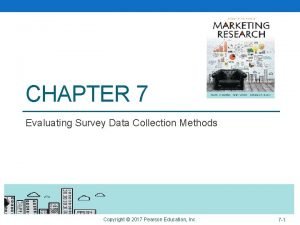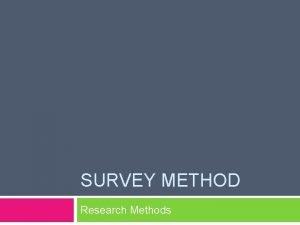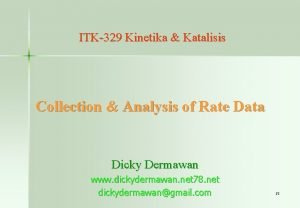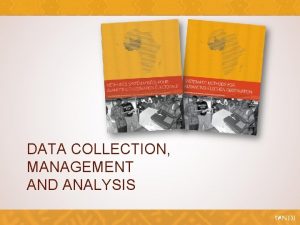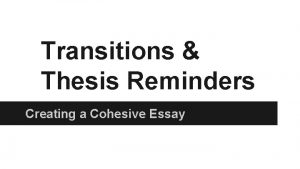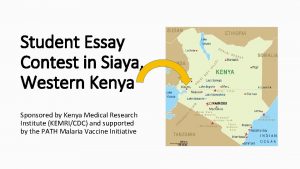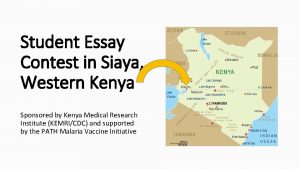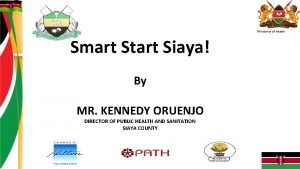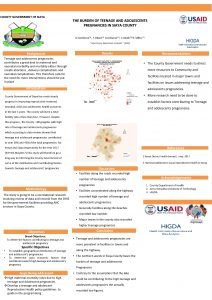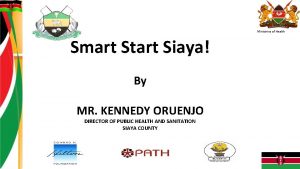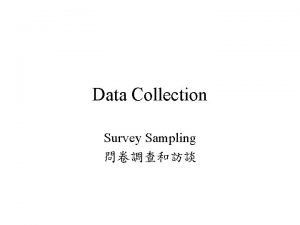Siaya Vihiga Survey Data Collection and Analysis Reminder








- Slides: 8

Siaya – Vihiga Survey Data Collection and Analysis Reminder: Baselines had been collected for 120 households in 2000 (but matching in different surveys was not perfect) so about 110 were useable. Follow up in 2002: consumption, assets, expenditure (nonfood) done in April to match 2000 calendar) – 103 households are fully intact with requisite data Follow up in September 2002 for land use and production data Follow up in December 2002 - January 2003 for market and credit transactions

Comparison of Chronic Poverty Using Different Measures in Siaya-Vihiga Villages Chronic Poor Transient: Poor to Non-poor to -poor Non-Poor Energy intake 11. 7 14. 6 30. 1 43. 7 Protein intake 35. 0 15. 5 37. 9 11. 7 Non-food expenditure 43. 7 14. 6 19. 4 22. 3 Liquid assets 62. 1 5. 8 10. 7 21. 4

Comparison of chronically poor under the protein intake and non-food expenditure definitions (% of households) Non-food expenditures Protein Intake Chronic Transient Non-poor Chronic 17. 5 12. 6 4. 9 Transient 23. 3 18. 4 11. 7 Non-poor 2. 9 5. 8

Comparison of chronically poor under the protein intake and asset coverage definitions (% of households) Asset Coverage Protein Intake Chronic Transient Non-poor Chronic 22. 3 4. 9 7. 8 Transient 34. 0 9. 7 Non-poor 5. 8 1. 9 3. 9

Identifying the Chronic Poor Obviously dependent on measures and criteria What to do when there are large trends – for instance a general worsening in poverty (and consequence rise in importance of transitory poverty)? For qualitative sampling – best to use households that qualify under more than one definition? The 2 -year panel seems to differ with qualitative case studies that seem to imply long-term transmission and reinforcement of poverty

Characteristics of the Chronic Poor Two factors were robust: secondary education and previous employment in formal sector Many other factors depended on measure of poverty: gender, ethnicity, family size Non-factors were: farm size

Agricultural Consequences of Chronic Poverty Significant differences are noted between the chronic poor and the non-poor; but chronic and tranistory poor appear to be similar in many respects Behaviour associated uniquely with the chronic poor: Use of fertilizer (amounts too) Behaviour associated with chronic and transient poor: Use of hybrids, use of credit, cultivation of cash crops, hiring of labour, use of animal manure

Adoption of improved fallows by poverty classification Never tried Dropped Testing Adopted Chronic poor 44. 4 8. 3 38. 9 Transient poor 49. 1 16. 4 3. 6 30. 9 Non-poor 25. 0 33. 3 16. 7 25. 0 Chronic poor 44. 4 20. 0 2. 2 33. 3 Transient poor 42. 9 17. 1 8. 6 31. 4 Non-poor 47. 8 4. 3 13. 0 34. 8 Protein measure Non-food expenditure measure


